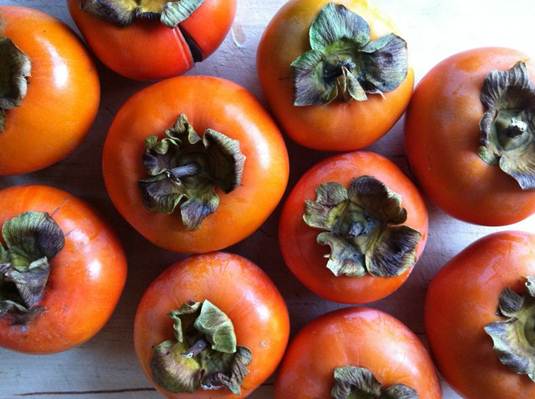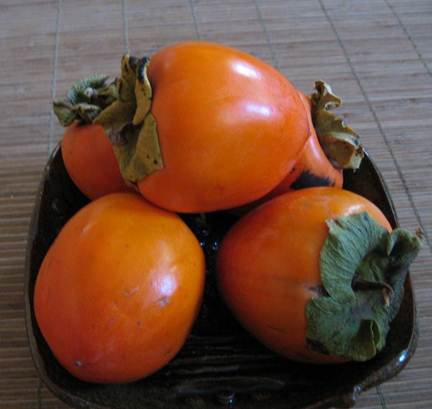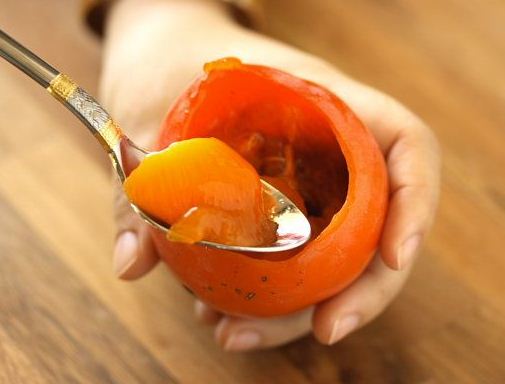This bright fall fruit, just arriving at your local market,
is ripe for adding to your produce repertoire.
Like its cousin the tomato, the persimmon is technically a
berry. Unlike the tomato, though, this fruit is often overlooked by American
cooks-which is unfortunate, because it’s not only juicy and delicious but a
great source of fiber and vitamin A. Of the approximately 200 varieties, your
market is likely to carry just two: Fuyu (shown) and Hachiya. The first has a
mild favor and should be eaten while hard and crisp. The Hachiya has a smooth,
creamy texture and is best when soft (underripe fruit can be bitter). Chef
Josiah Citrin of Meliesse in Los Angeles shares tips for enjoying this tasty
choice.

Fuyu
Select
Look for smooth, glossy skin without blemishes. The Fuyu
persimmon is round and should be bright orange and firm to the touch, while the
more elongated Hachiya is lighter in color and should feel somewhat squishy.
Store
Both can be kept on the kitchen counter for two to three
days. It’s particularly important to eat this fruit when ripe-if you wait too
long the favor will be of, and refrigeration can make persimmons taste
unpleasant.

Hachiya
Prepare
A gentle wash under cold water is all this fruit needs.
Serve
Enjoy raw slices of creamy Hachiya persimmons with
prosciutto and burrata cheese. The Fuyu works well peeled, diced, and mixed
into tuna salad or served over greens. For a quick dessert, freeze Hachiyas for
15 minutes, then cut into wedges, drizzle with a tablespoon of bourbon, and
serve with a scoop of vanilla ice cream.

The Fuyu works
well peeled, diced, and mixed into tuna salad or served over greens.
Nutrition score
One medium fruit = 118 calories, 6g fiber, 13mg vitamin C,
2,733IU vitamin A

Enjoy raw slices
of creamy Hachiya persimmons with prosciutto and burrata cheese.
Did you know?
California produces 99 percent of the persimmons sold in the
United States.